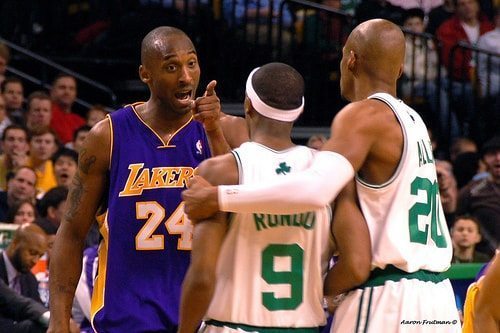A few years ago, I walked into a project room where two of my team members were clearly not on the same page. One was visibly frustrated, arms crossed, silent. The other was trying to explain something with increasing urgency. I instinctively stepped in to resolve the matter, but by the end of the meeting, I felt like I had done more firefighting than facilitation.
That moment stayed with me. Since then, I have looked at team conflict very differently. I no longer see it as something to avoid, or even as something to manage in the traditional sense. I now see conflict as a gateway to deeper alignment, better decisions, and stronger collaboration if we handle it wisely.
Conflict in teams is inevitable. People bring different perspectives, backgrounds, goals, and working styles. And that is a good thing. The challenge is not to eliminate conflict, but to harness it productively.
In this post, I want to share three pointers that have helped me, and the teams I have worked with, not just navigate conflict, but grow through it.
Is Conflict in a Team Always Bad?
Table of Contents
Let me start by addressing a common misconception. Many leaders believe that a good team is a harmonious one. But harmony without honesty can be dangerous. When everyone agrees all the time, it usually means that some voices are silent or that there is a fear of disagreement.
On the other hand, constructive disagreement leads to richer conversations. It makes space for diverse opinions and builds the foundation for inclusive decisions. In fact, some of the most innovative teams I have seen are those that engage in frequent, respectful conflict.
So the question is not how to avoid conflict, but how to use it to our advantage.
Here are the three most important things I have learned about managing conflict in a way that builds trust and psychological safety in teams.
1. Manage Emotions Before You Manage the Problem
One of the first lessons I learned as a facilitator was this. When emotions run high, logic runs low.
In the middle of a disagreement, most people are not listening to respond constructively. They are reacting, defending, or preparing a rebuttal. This is why the best problem-solving does not begin with solutions. It begins with emotional awareness.
In their book Getting to Yes, authors Roger Fisher, William Ury, and Bruce Patton emphasize the importance of separating people from the problem. That line has stayed with me. Because when people feel personally attacked, they stop engaging with the issue.
Over the years, I have found a few practical ways to manage emotions before diving into the conflict:
- Pause and name the emotion. Sometimes, just saying “I can sense we are both getting a little tense” creates space to step back.
- Ask for perspectives, not positions. Say, “Help me understand how you see this” instead of “Why do you disagree?”
- Use “I” statements. For example, “I felt concerned when I saw the deadline slip” instead of “You missed the deadline again.”
- Acknowledge the other person’s feelings. It sounds simple, but validation often defuses defensiveness.
- Avoid fixing it right away. First, make sure people feel heard. Then, invite them to solve the problem with you.
As leaders, when we coach our teams to become more emotionally aware, we empower them to resolve conflicts more constructively. If we do not, we end up becoming permanent referees.
This is a core concept in FocusU’s Effective Business Communication Skills program, where teams learn to become emotionally intelligent collaborators, not just compliant colleagues.
2. Inspire Trust by Creating Psychological Safety
A team without trust cannot function well. It may deliver results for a while, but it will never thrive. Conflict in such teams feels threatening, because people are afraid to speak up. And that is when resentment, passive-aggression, and politics begin to grow.
On the other hand, when people feel safe, they speak openly. They challenge ideas, not people. They ask questions. They own up to mistakes. And yes, they engage in conflict, the healthy kind.
So how do you build that kind of trust?
In my experience, it starts with the leader. If you want your team to be open, you must go first.
Here are a few things I have practiced, and seen other leaders do effectively:
- Share your own mistakes and learnings. This signals that vulnerability is not weakness, but strength.
- Invite honest feedback. And respond without defensiveness.
- Set team norms that reward openness. For example, make it a practice to ask, “What is one thing we missed?” at the end of each meeting.
- Create off-script moments. Informal conversations, team check-ins, or even virtual coffee chats go a long way in building rapport.
- Recognize behaviors, not just results. Acknowledge someone who respectfully challenged a decision or helped mediate a disagreement.
I have seen firsthand how powerful this can be. One of the most transformative moments in my leadership journey came when I admitted in a team meeting that I had overlooked a critical feedback point. Instead of losing credibility, I gained it. Because I modeled what I expected from others.
Trust cannot be mandated. It must be modeled, nurtured, and earned, every day.
3. Foster Collaboration Through Creative Teamwork
Most conflicts in teams do not come out of nowhere. They come from misalignment, unmet expectations, or siloed efforts. One of the best ways to reduce friction is to increase collaboration.
When people work closely, share wins and losses, and understand each other’s working styles, conflict does not disappear, but it becomes easier to manage. There is more empathy. More benefit of the doubt. Less one-upmanship.
So, as leaders, we need to be deliberate about creating shared experiences. Not just one-off team-building activities, but continuous opportunities to work together in meaningful ways.
Here are some simple ways I have done this with teams:
- Design cross-functional projects that require input from different members.
- Rotate meeting facilitators so that everyone gets a sense of ownership and inclusion.
- Use tools like retrospectives after a project to reflect on what went well and what could improve.
- Celebrate collective achievements, not just individual milestones.
- Lean into team-based incentives. When success is shared, so is responsibility.
At FocusU, we often see how experiential learning programs open up new ways for teams to collaborate and communicate. These programs simulate high-pressure scenarios, challenge assumptions, and create safe spaces to surface and resolve conflict in real time.
As a leader, your job is to create the conditions. When you do, collaboration becomes a habit, not an exception.
Final Reflection: Don’t Eliminate Conflict. Transform It.
The biggest shift in my mindset as a leader came when I stopped trying to avoid conflict and started learning how to use it. Because when handled with care, conflict becomes a powerful catalyst for clarity, innovation, and growth.
So the next time you sense tension in your team, do not rush to fix it. Create space to explore it. Ask questions. Listen fully. Invite honesty. And most importantly, trust your team’s ability to grow through it.
Every team will face conflict. The question is, will it break them or build them?
Looking to help your teams handle conflict better?
Explore FocusU’s Effective Business Communication Skills and Interpersonal Effectiveness programs that build high-trust, high-performance teams.










